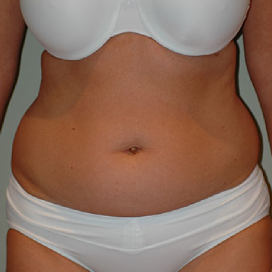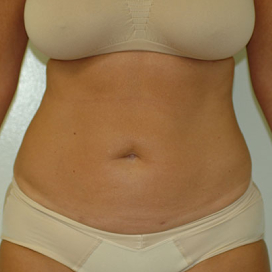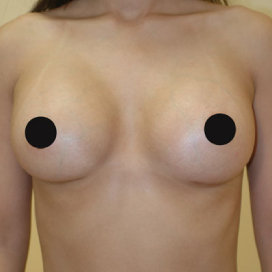
find out everything you need to know about breast revision
Breast revision surgery, also known as breast implant revision, is a surgical procedure that aims to correct issues with previous breast augmentation or reconstruction surgeries. The procedure is performed to replace or remove implants, adjust implant size, correct asymmetry, and improve overall breast appearance and feel.
Breast revision surgery may be necessary due to a variety of reasons, such as implant rupture, capsular contracture (a hardening of the scar tissue around the implant), implant displacement, or dissatisfaction with the results of previous surgery. In some cases, breast revision surgery may also be performed for medical reasons, such as to remove or replace a faulty implant.
The specific techniques used in breast revision surgery will vary depending on the individual’s unique needs and goals. The procedure may involve removing and replacing implants, adjusting the position of the implant, or modifying the breast tissue to improve the overall appearance and feel of the breasts.
Benefits
Typically, revisions are not planned for or expected, but the possibility is a reality if you’ve had any procedure. The most important thing you can do when faced with a problem is select an expert who specializes in the correction of your issue. Breast revision surgery may be desired by the patient or necessary to correct a problem. The most common reasons that patients will undergo a breast revision are:
Often, when referring to breast revision surgery, the original surgery was breast augmentation with breast implants. Revision surgery is a term that refers to any subsequent surgery performed on body tissue that has undergone a procedure previously.
Surgery Wait Time
Because the body’s inflammatory process takes time to fully resolve, many plastic surgeons will advise waiting 6 months or more after the initial procedure to undergo a second. As with any area of the body, because fresh scar tissue is tough and vascular, the scar tissue needs to mature somewhat for healthy blood flow to be restored completely to surrounding tissues before subjecting them to the stress of surgery again. Unnecessary, excessive bleeding or poor cosmetic outcomes could result otherwise.
Another reason to wait before considering revision surgery too quickly is that the inflammation, skin tension, and other breast changes that occur after a breast augmentation will last many months. The implant position and shape will appear different a month after surgery and 6 months after surgery because as the breast tissue softens and relaxes, the implants will slowly relax and settle in as well, taking on a more natural look and feel. For some patients with tight tissue or large implants, this process requires a lot of patience, and the early results may be frustrating. Performing a revision before settled results are seen would mean further, unpredictable aesthetic outcomes and prolonged risk of infection, scarring, and other issues.
Dr. Michael Gartner is a double board-certified plastic surgeon and patients come to him for help because they know that he has extensive experience performing breast revision surgeries.
Your surgery will be performed at our state-of-the-art surgical facility. Our facility is fully accredited by the American Association for Accreditation of Ambulatory Surgery Facilities (AAAASF). AAAASF medicare certification is considered the gold standard in accreditation and one of the highest certifications any ambulatory center can obtain in the country.
Revision Process

Breast revision surgery is a specialized procedure aimed at correcting issues with previous breast surgeries, such as implant displacement, rupture, or asymmetry. As a highly sought-after plastic surgeon in New York and New Jersey, Dr. Gartner takes the time to analyze your goals and medical history during the initial consultation to provide personalized suggestions for your situation. He educates his patients about the breast revision process, including the surgical plan, associated risks, and benefits. Our goal is to ensure that you have all the information needed to make an informed choice. With Dr. Gartner, you can trust that you will receive the highest quality of workmanship and be a preferred patient.
WHAT TO EXPECT AFTER A BREAST REVISION?
After a breast revision surgery, it is normal to experience some discomfort, swelling, and bruising. Dr. Gartner will provide you with pain medication to help manage any discomfort you may experience. You will be instructed to wear a compression garment or surgical bra to help support your breasts and reduce swelling. It is important to avoid strenuous activity or heavy lifting for several weeks following the surgery to allow your body to heal properly. You may also need to avoid sleeping on your stomach or side for some time. Dr. Gartner will provide specific post-operative instructions tailored to your individual needs. It is important to attend all follow-up appointments to ensure that your healing is progressing well and to address any concerns or issues that may arise.
SCAR REVISION
Perhaps your original breast implant scars didn’t heal well. Scars on the skin of the breast can be corrected with a revision procedure. This involves excising the old scar and re-suturing the incision. This is done meticulously with no external tension allowed on the incision edges to ensure the scar will be thin and minimal. As mentioned above, the best time for a scar revision is generally at least six months after the initial procedure.
BREAST ASYMMETRY
It can take 6 months and even up to a year for the breasts to, “drop” following the insertion of implants. If one implant has not dropped after sufficient time passes, the cause may be related to the space in the pocket, inframammary fold position, incision scarring, or pectoral muscle. This can be corrected through various minor surgical procedures to make adjustments. The implant does not necessarily need to be changed.
REPLACEMENT TO A DIFFERENT SIZE
Plenty of people feel a bit nervous and self-conscious when first deciding on an implant size. While natural and petite can be very attractive, some women decide a few years down the road that they would be comfortable with a fuller, curvier look. It is also possible to choose something rather large when we are young and then decide years later that the large breast size is interfering with life and comfort. A secondary breast surgery can involve very little revision and be extremely straightforward. Recovery is typically fast and significantly easier than the first. Any revisionary adjustments to the implant pocket or position will add some complexity.
Breast Implant Removal
- Don’t do anything (not recommended)
- Remove and replace the affected implant
- Remove and replace both implants
If the manufacturer of your implants has provided a lifetime warranty, you may be eligible to obtain new implant(s) at no additional cost. If you suspect that your implant has deflated or ruptured, you can reach us to book a private consultation with Dr. Michael Gartner.
He will assess you, discuss the details of your breast augmentation history, and recommend options. Revision surgery to replace or remove the previous implants will require the surgeon to make an incision along the original scar, remove it, and remove the old implant to replace it with a new one. You may have different implant type and size choices now than you did before.
Even though breast implant manufacturers provide a lifetime warranty, most of them are not expected to last a lifetime. The average lifespan of an implant is said to be in the range of 10 to 20 years. The newer generation silicone cohesive gel implants are extremely durable and well-tested medical devices.
As a result, patients will most often choose secondary surgery after a long passage of time due to the desire for a breast lift or size change. True ruptures are rare, however in these situations, the patient has several options to choose from:





